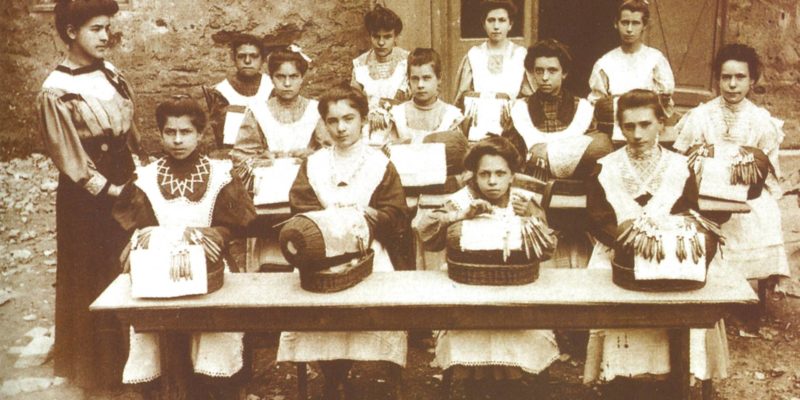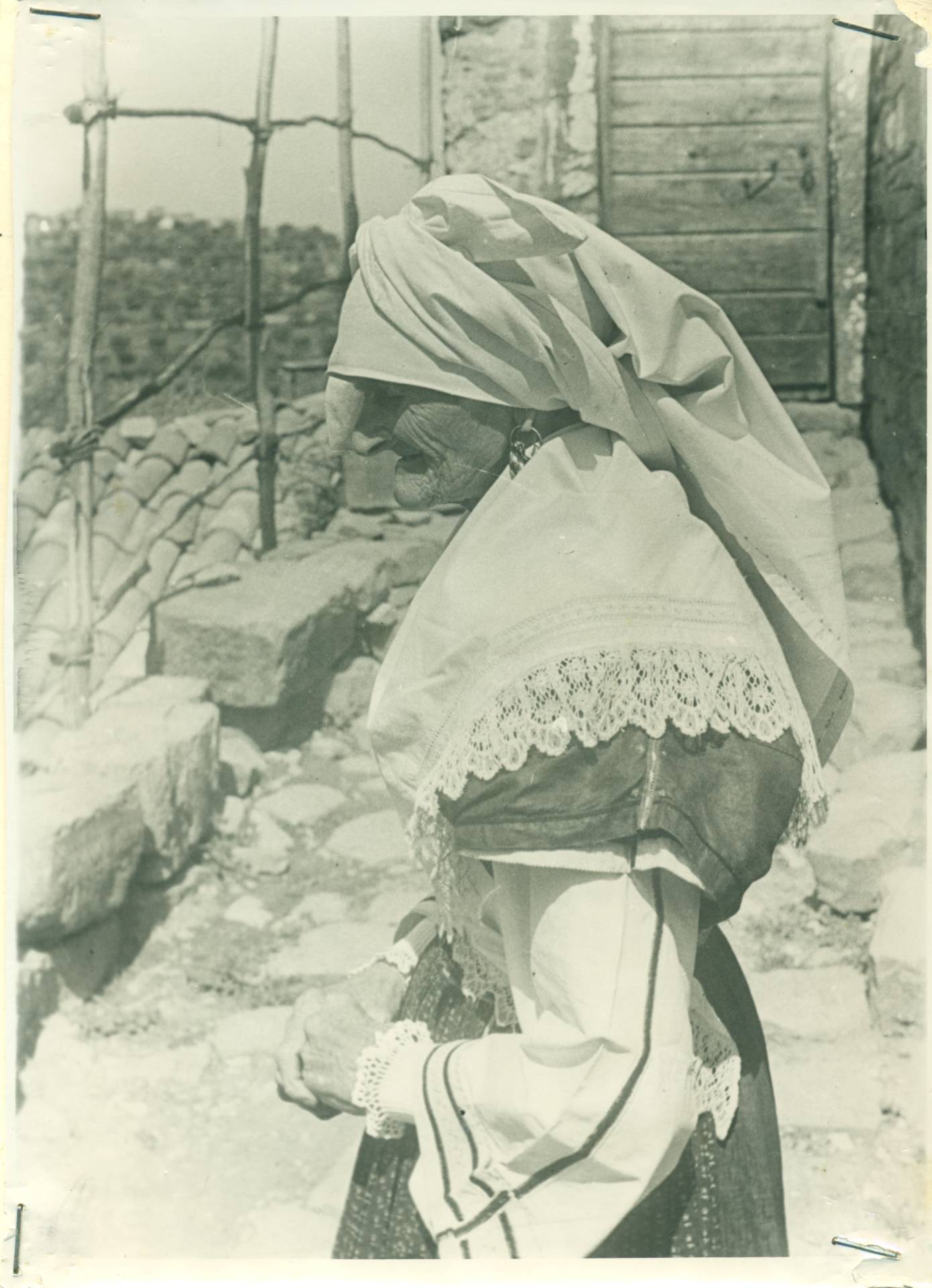Samples and fragments of Venetian lace dating from the 16th century onwards: these represent the oldest and most valuable lace in the museum. Venetian lace includes both bobbin lace and needle lace, as well as combinations. It also includes Renaissance lace, or pizzo rinascimento, which was typical of the 16th century. The art of needle lace was at a high level in Venice, while Flanders excelled in bobbin lace. It can be quite difficult to tell these techniques apart. In the beginning made chiefly to decorate church cloths and clerical clothing, bobbin and needle lace later became an extremely popular trimming for the clothes of affluent townspeople, adorning starched collars, cuffs and veils. In 1882, the priest Giovanni Zamarin prompted the establishment of a Venetian lacemaking school in Izola (L’Imperial Regia Scuola di Merletti a Isola d’Istria), which continued to operate until 1936, when it moved, together with teacher Luigia Pugliese and all its equipment, to the Lacemaking School in Idrija.

Crocheted lace samples: they are believed to originate from the school of Augustinian nuns at the end of the 19th century in Koper, where the nuns organised classes for various handicrafts before any formal schools were established. At the turn of the 20th century, crocheted lace became popular in the Slovenian ethnic lands. At first it was only used to decorate bed linen and kitchen linen. It then began to be used on undergarments and later on clothes, particularly women’s clothes.
The uses of lace and embroidered ornaments: border trims, applied lace and embroidery on clothing and textiles from the 18th to the mid-20th century, which embellish:
- outer garments in rural and urban settings, where it is worth noting in particular the use of lace on women’s traditional dress in Istria, where needle lace appears on the blouse as a decorative insert on the cuffs and along the length of the sleeves. The lace is framed by contrasting bands embroidered with single (or double chain) stitches in black or dark brown thread. A shawl called a fečou, worn over the head and shoulders, was an important part of women’s dress in Istria. It consisted of a square kerchief of white linen or thin cotton fabric – a jaconet, embroidered with white embroidery on the back corner and extending along the sides. It was edged on all sides or, more rarely, only on the corner with a corner flower, with white Valenciennes lace. Valenciennes lace is also used to finish the sleeves of the oldest item of men’s urban clothing held by the museum – a late 18th century taffeta tailcoat.
- children’s clothing: coifs, shirts, cardigans
- linen: underwear and nightwear
- protective clothing: aprons, housecoats
- fashion accessories: collars, gloves, fans, parasols, wedding veils etc.
- household textiles: curtains, towels, covers, sheets and cases, tablecloths, napkins
- tools and utensils, patterns, samplers.
